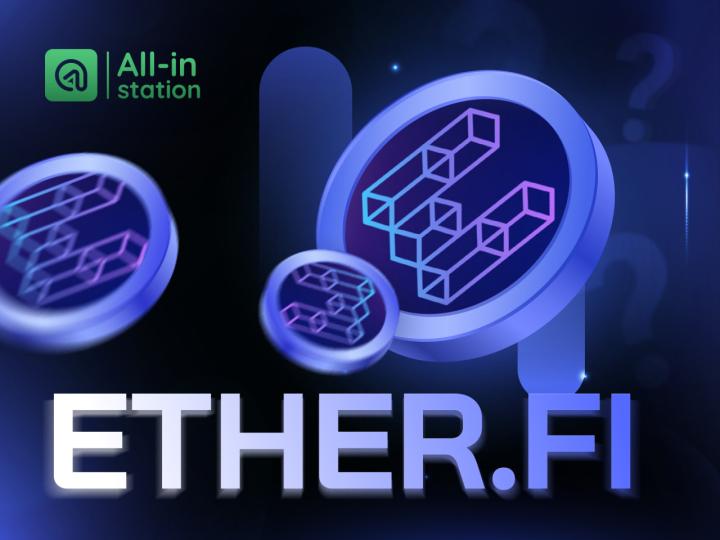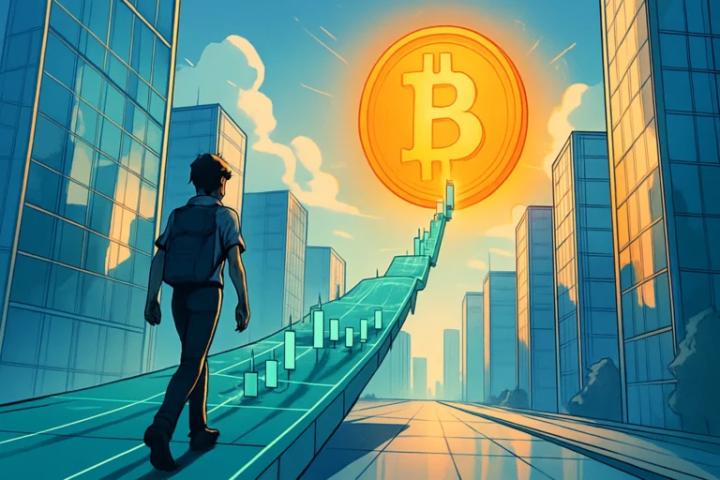Impermanent Loss has been on a rollercoaster ride since the start of 2025, with the market consensus being that the bull market has reached its peak. During the Lunar New Year period, the Crypto Fear and Greed Index remained in the 60-70 range, indicating a cooling of market greed compared to the end of last year. However, the other side of the market is the current total market capitalization of stablecoins, which has surpassed $217 billion, setting a new all-time high. This rapid growth is naturally inseparable from the TRUMP token factor. Since the launch of the TRUMP token on January 18th, Solana has surpassed the BNB chain to become the third-largest blockchain network for stablecoin supply.
The market downturn continues, and market participants now have a stronger demand for risk-averse and stable returns. For DeFi users, stablecoins not only serve as a hedge against market volatility, but are also gradually evolving into a "steady and winning" financial track. The rapid expansion of the Solana ecosystem in stablecoin applications has provided participants with more diverse investment strategies and greater potential returns. Next, we will take the leading lending protocol Kamino on Solana as an example to explore its new developments and high-yield opportunities in the stablecoin finance field.
USDT Yields up to 90%, Kamino's Ace is More Than That
Kamino Finance, established in 2022, is a DeFi protocol with multiple functions including lending, automated liquidity pools, leveraging, and trading. Currently, Kamino's TVL on Solana ranks fourth, behind Jito, Jupiter, and Raydium. Recently, Kamino has also launched the beta test of its Swap function, with TVL and fee income reaching new highs.
Moreover, Kamino dominates multiple asset categories in the Solana ecosystem, including PYUSD and the recent cbBTC, with 88% of Solana's cbBTC deposited in Kamino.
In August last year, Kamino launched the PYUSD incentive program, successfully attracting $180 million in PYUSD inflows, which ultimately became a source of income for the protocol as PYUSD lending demand grew.
Similarly, for stablecoins, Kamino has recently launched incentive programs for USDT, such as USDT lending in the JLP Market and Main Market, and the launch of the USDT JLP Multiply section, with yields approaching 90%. It is well known that Solana has always been the domain of USDC, but now the largest lending protocol on Solana is starting to incentivize USDT, which can be seen as a positive signal.
Leveraged Strategies Boost Yields "Exponentially"
If you have idle USDT, a low-risk way to participate is to provide USDT in Kamino's lending market, where the APY in the Main Market and JLP Market is currently 6% and 5% respectively. However, you can also choose to invest your USDT in Kamino's flagship Multiply module, with a maximum APY of up to 90%.
Compared to regular lending products, Multiply combines liquidity staking, flash loans, and lending protocols to provide further leveraged yield strategies. Users can deposit a portion of their assets, and the protocol will automatically borrow more assets and reinvest them back into the liquidity pool, generating returns multiple times the principal. This process relies on two core mechanisms of K-Lend: eMode and flash loans.
For example, the user chooses the desired leverage ratio and deposits assets such as SOL or JitoSOL. At the protocol level, Kamino automatically converts the user's deposited SOL into JitoSOL. To further enhance the user's capital efficiency, Kamino will also borrow SOL through flash loans. Kamino will then convert the borrowed SOL into more JitoSOL and deposit them into Kamino's lending platform K-Lend, after which Kamino will borrow SOL from K-Lend to repay the previous flash loan.
From the user's perspective, they only need to deposit assets and choose the leverage ratio. The end result is a leveraged position for the user, with the return exposure amplified to the target multiple. The yield and cost of this position are as follows:
Staking Rewards: JitoSOL, as a liquidity staking token, continuously generates SOL staking rewards, with a yield equal to the JitoSOL staking APY.
Borrowing Cost: Users need to pay the borrowing APY for SOL, which is the capital cost of using leverage.
Net Yield: As long as the JitoSOL staking APY is higher than the SOL borrowing APY, the user can achieve a positive net yield. For example, if the JitoSOL staking APY is 7% and the SOL borrowing APY is 6%, the user's net yield would be 1%.
Currently, Kamino's Multiply product offers more than a dozen options, but the highest annualized yields are predominantly in stablecoin-related JLP Multiply, with USDT's maximum annualized yield exceeding 90%.
Ecosystem Depth + Automation, the Sustainability Behind High Yields
The yield rate and sustainability of DeFi projects have always been the core concerns of investors. Relying solely on short-term high yields to attract users is not sustainable. Especially in the current market environment, many platforms that rely mainly on subsidies or platform token incentives may provide relatively high yields in the short term, but this type of yield is often unstable and difficult to maintain in the long run.
In comparison, Kamino exhibits stronger sustainability through its unique ecosystem depth and automated management mechanisms.
Kamino not only relies on short-term yield incentives, but also deeply participates in the Solana ecosystem to provide more stable and long-term sources of income. This model can not only attract more long-term investors, but also bring more stable liquidity to the platform. Through deep integration with mainstream protocols in the Solana ecosystem, such as Jupiter and Jito, Kamino has achieved more efficient asset management and yield optimization.
For example, in the JTO-JITOSOL vault, starting from January 6th, 75,000 JTO tokens will be distributed to depositors as incentives through Kamino, and these rewards will be allocated proportionally to the TVL, just like other Kamino farms. If you occupy 10% of the vault's TVL in the next 30 days, you can receive 10% of the JTO rewards.
In addition to the yield, users who deposit in the vault can also earn MET points from the Solana ecosystem DEX Meteora and Warchest points from the staking protocol Kyros, in order to obtain airdrops from Solana ecosystem projects that have not yet had their token generation event.
Automation is another ace up Kamino's sleeve. In addition to the previously introduced Multiply, there is also the automated liquidity vaults. Launched by Kamino in August 2022, this product will allocate user funds to the underlying DEX liquidity pools and optimize yields through automated tools. Specifically, when users deposit funds into Kamino's vaults, these funds will be allocated to DEX liquidity pools composed of two tokens. Whenever traders use this liquidity pool for token swaps, certain trading fees will be generated, and as Kamino's depositors, users can share in these trading fees.
The automation is reflected in Kamino's automatic adjustment of user positions to ensure that funds are always within the optimal trading range, thereby maximizing yields and reducing impermanent loss risks. Furthermore, Kamino automatically reinvests the trading fees and additional incentives into users' positions, without requiring manual operations, further enhancing the efficiency of capital utilization. Kamino also supports automatic conversion for single-sided deposits and withdrawals, simplifying the user's operational process.
To enhance user flexibility, Kamino also provides an interchangeable kToken as a deposit certificate. After depositing funds, users can freely use kToken in the DeFi ecosystem for other operations, further unlocking the value of the funds.
"Road to $10B": Kamino's Future Imagination
With the expansion of the Solana ecosystem, the number of projects, asset types, and user scale continue to grow, and the demand for the lending market is also increasing simultaneously. In July 2024, Kamino released a phased growth strategy plan "Kamino: Road to $10B", which mentioned the development of 4 core pillars, including products, community, native tokens, and revenue. We will temporarily set aside the latter three, as having a core product is the strongest moat to compete in the fierce crypto market.
Currently, the credit market in the Solana ecosystem still mainly relies on large, centralized lending pool models, but there is still huge room for development, which can bring many new opportunities. As for Kamino, the most anticipated V2 update will introduce modular lending, further evolving Kamino Lend, making it a more powerful and open lending infrastructure. The launch of V2 will spawn a series of innovative products and enable the protocol to cover new application scenarios, such as:
RWA Lending
P2P Lending
Order book-based lending
More advanced risk management engine

In addition to modular lending, Kamino V2 will also launch spot leverage, improve the liquidation engine and risk management, and provide functions such as automatic collateral withdrawal, target leverage, and stop-loss/take-profit.
V2 will also further deepen its connection with Solana ecosystem projects. Currently, Kamino is in-depth discussions with multiple DeFi protocols, and these protocols will innovate and explore new application scenarios based on V2. The cooperation partners include existing Solana ecosystem projects as well as non-native projects that will migrate to Solana, all of which will launch core products on Kamino Lend V2.
According to the official document, Kamino is also incubating multiple V2 ecosystem projects internally and will invest a lot of resources in the following areas:
DeFi protocol integration (to promote more DeFi protocols to interconnect with V2)
Ecosystem integration grant program (to support developers in building products based on V2)
Hackathon sponsorship (to attract more developers to join the V2 ecosystem)
Currently, the DeFi landscape of the Solana ecosystem has a certain stability, and the stablecoin share has grown by 112% since this year. As the lending leader, Kamino still has a high development ceiling, and it is worth closely watching whether it can continue to steadily expand based on its unique technology and ecosystem advantages. After all, in the ever-changing crypto industry, seizing the next growth point may have the opportunity to become a new "explosive engine".
Kamino Official Website|Official Twitter
Welcome to join the official BlockBeats community:
Telegram Subscription Group: https://t.me/theblockbeats
Telegram Discussion Group: https://t.me/BlockBeats_App
Twitter Official Account: https://twitter.com/BlockBeatsAsia









